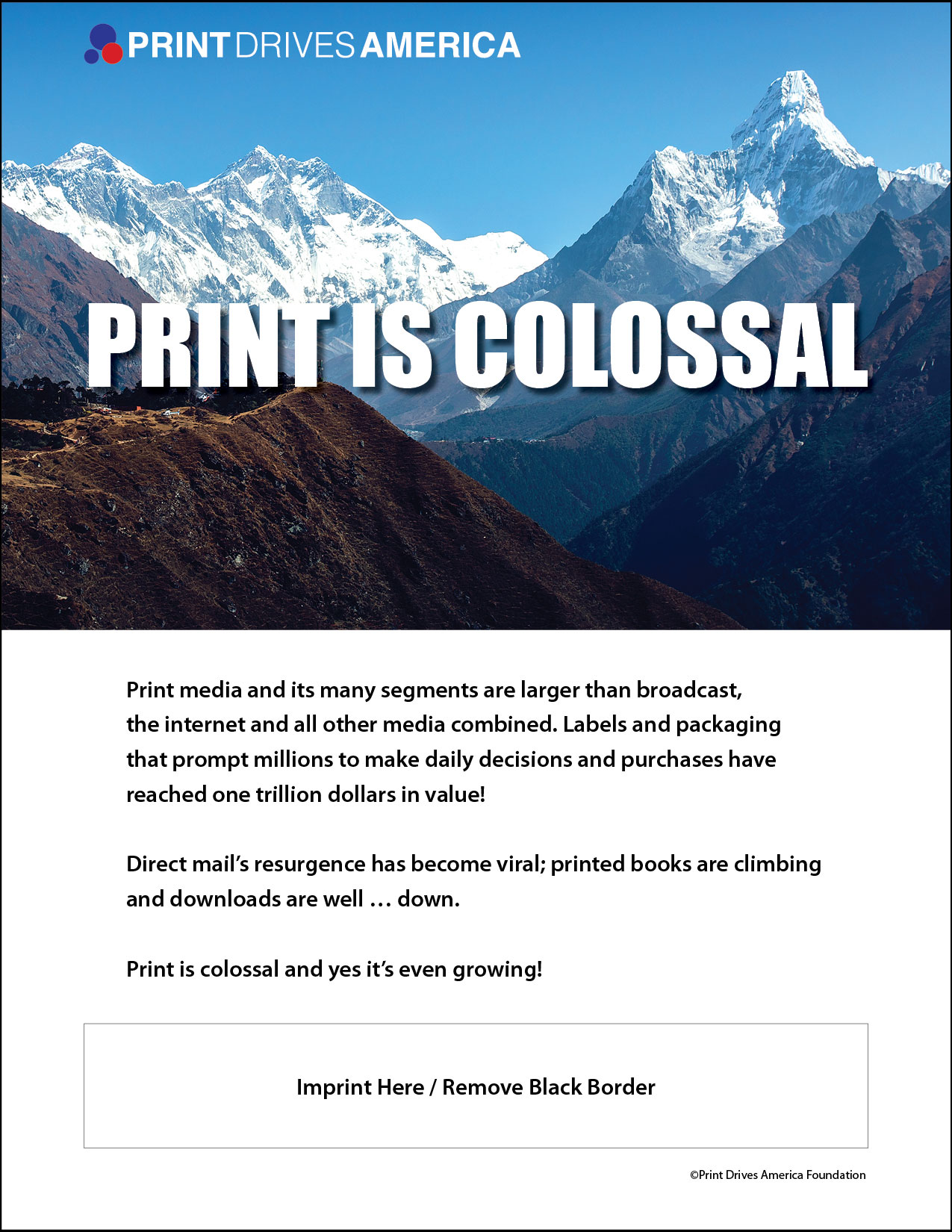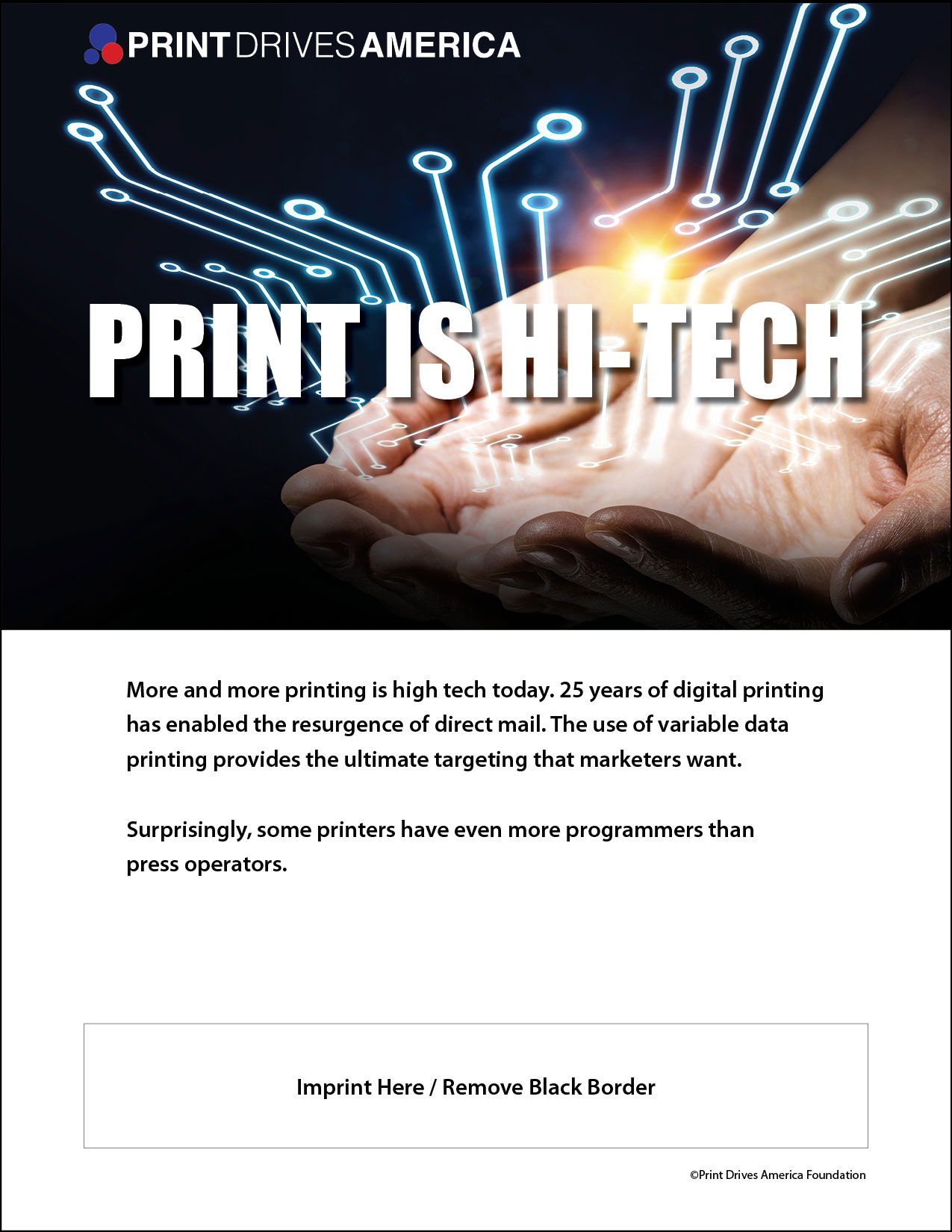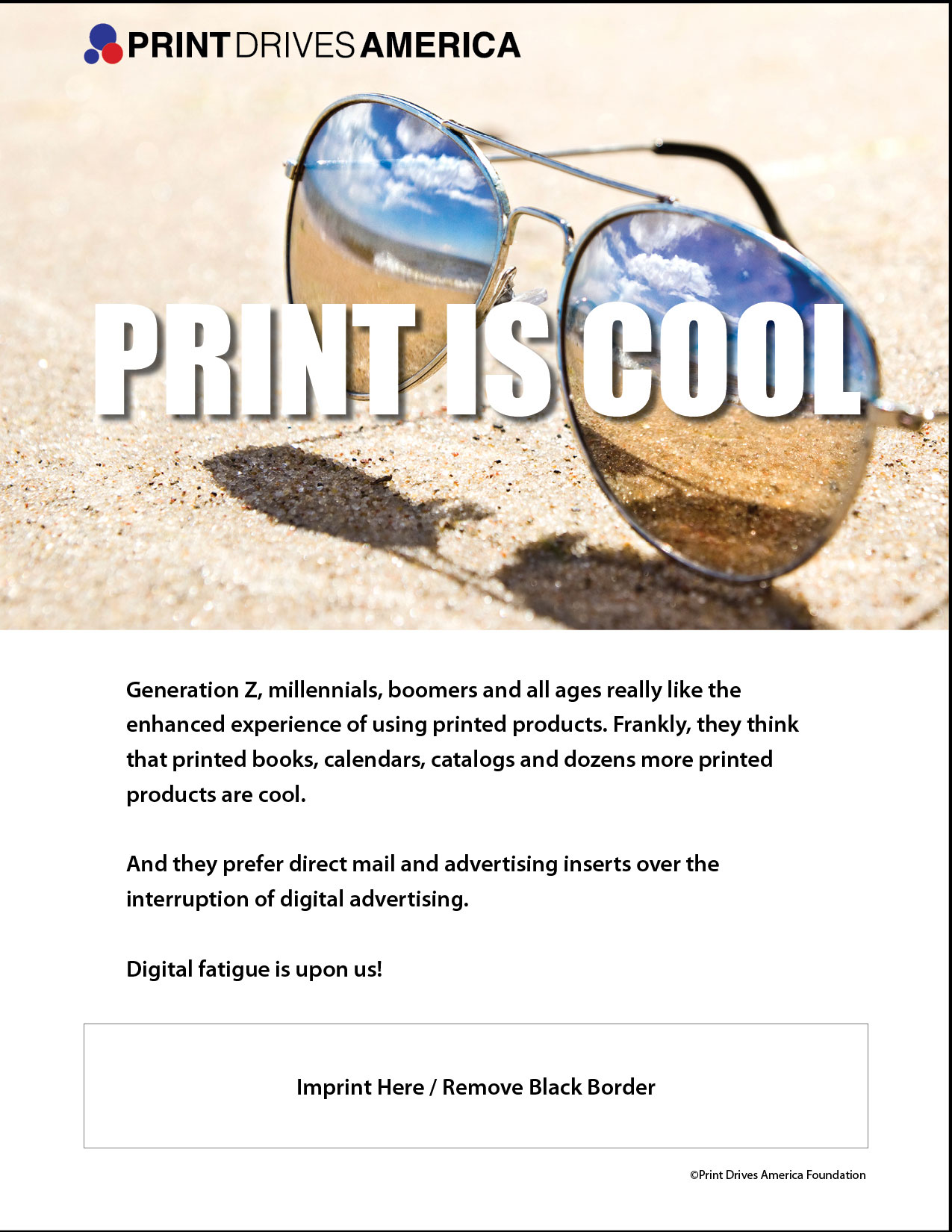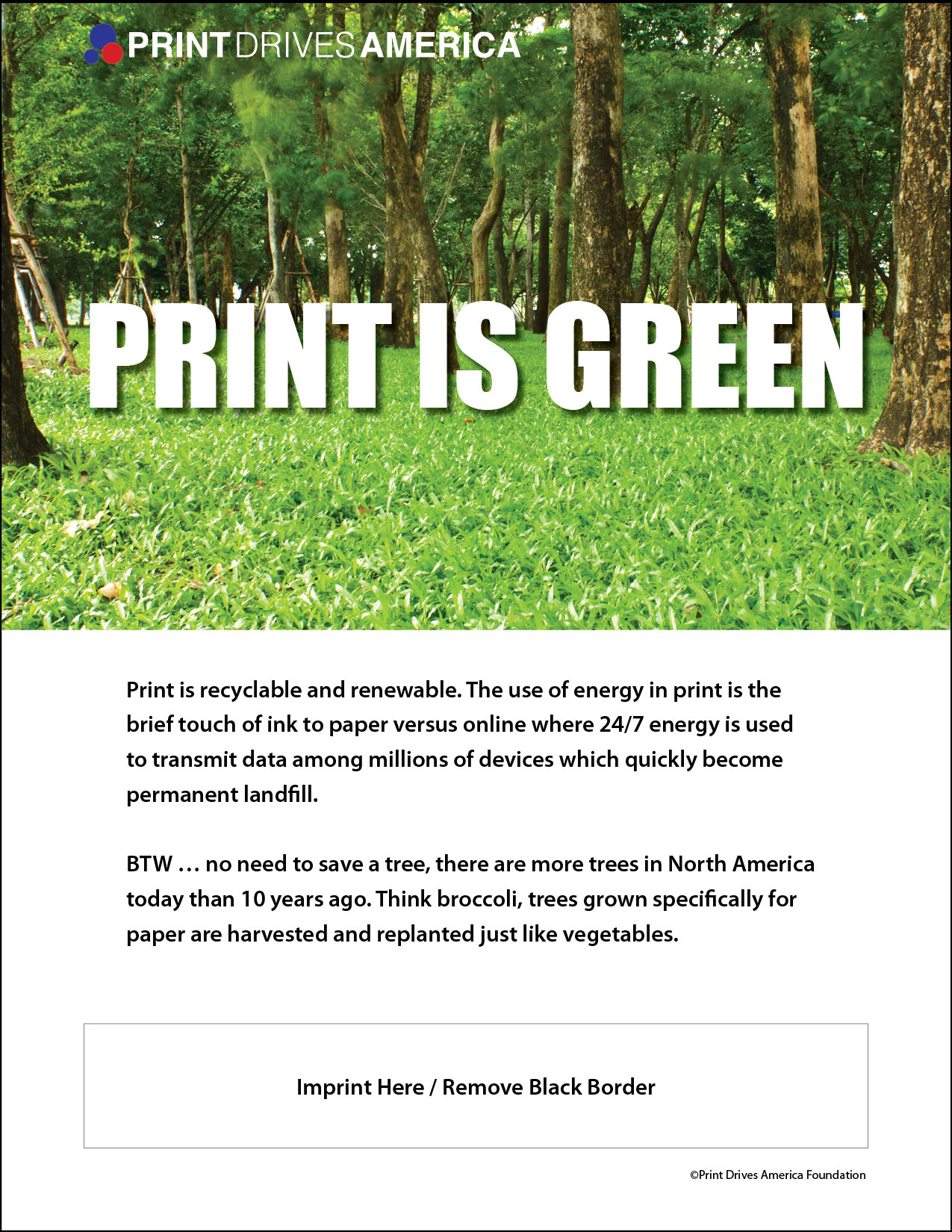By Patrick Henry, Liberty or Death Communications
No previous recipient of the Print Drives America Franklin Award for Distinguished Service has climbed to greater heights in the commercial printing industry than Thomas J. Quinlan III, the 2020 honoree.
Quinlan most recently was chairman, president, and CEO of LSC Communications, a $3.5 billion company formed in 2016 as an independent spin-off from R.R. Donnelley & Sons Co. He had served since 2007 as the president and CEO of R.R. Donnelley, then the largest provider of printing and communication business services in the world. Quinlan also held various C-level positions with Moore Wallace and World Color Press as well as finance positions with Marsh McLennan and Kidder Peabody.
On the occasion of his receipt of the Franklin Award, which he and 2021 honoree Michael Duggal (Duggal Visual Solutions) will accept at the 68th Annual Print Drives America Franklin Event in New York City on November 17, we asked Quinlan to reflect on his time in the industry and the changes he has seen in the nature of the printing business over the years.
Please talk about your early days in the industry: where you broke in, how the arc of your career got started.
I was fortunate. I had worked in financial services companies including Kidder Peabody, an investment banking firm on Wall Street. Then I went to Marsh McLennan. KKR, a private equity investor, had a portfolio company called World Color Press that was looking for a treasurer. So I went over to interview with a gentleman who I heard had a rough reputation: Bob Burton (Robert G. Burton Sr., then CEO of World Color Press – Ed.). Bob hired me, and that was where I first got involved in printing.
I got there at the end of 1993. It was the best thing that happened to me, being involved with Bob. He was going to build the company up from where it was. He said he was going to consolidate the industry, and he did both. He also put together a heck of a team, people who to me were the tops not only in the print industry, but in any industry.
I had a great opportunity to learn about the industry and being a leader. As long as you delivered, Bob would give you more responsibility. I followed him to Moore, and from there, Moore acquired Wallace Computer Services (to form Moore Wallace in 2003 – Ed.).
In 2004, R.R. Donnelley acquired Moore Wallace and the Moore Wallace management team. There, I got to be CFO and COO, and was given the opportunity in 2007 to take the helm of R.R. Donnelley.
I was 44 years old, so it was quite an opportunity, quite a responsibility. And I had a great team, surrounded by fantastic people. We took care of our customers, we took care of our vendors, we tried to take care of all of our stakeholders. But at the same time, we were taking the company in a different direction, because of all that was taking place from a digital standpoint.
As the president and CEO of what was then America’s largest printing company, you oversaw some of the most significant business acquisitions in the industry’s history. Do you think that the industry has the same kind of dynamism and energy today?
Obviously, there are fewer multibillion dollar players, because of consolidation and divestments made from within those companies. But the energy is still there, and you still have R.R. Donnelley and Quad. LSC is owned by Atlas Holding Company. There are some other big players out there, like Cenveo and CJK Group. Every day, the industry continues to have people in it who are striving to evolve with the times from a technology standpoint.
You have also witnessed tremendous technological change in the industry. Which of these technological advances do you see as the most far-reaching, and why?
Honestly, I would say “Steve Jobs.” When he developed the iPhone, that’s when everything changed. We have some great equipment in this industry that can produce amazing products at amazing speeds, but Steve Jobs creating the iPhone is to me where we saw the biggest technological change for the printing industry.
Content didn’t have to be in physical form, because of the iPhone. As a result of that, social media developed, different types of devices developed. Everything with ink on paper was now easily transported over to electronic form.
What it did to the magazine industry, the catalog industry, the direct mail industry, the book industry, and the financial industry really opened the floodgates to moving from the physical world to the electronic world. The mobility of it, and the ease with which you could go ahead and deliver content to your fingertips, was to me putting the transformation pretty much on steroids, and it just took off.
In a 2015 interview with Mark Michelson of Printing Impressions, you stated that “print is the doorway to digital, and digital is the doorway to print.” As people continue to increase the amount of time they spend in social media and other non-print channels, do you think that the “doorway” relationship still exists?
I do, but the doorway I spoke of back then was this huge, monstrous doorway that millions of people would fit into at once. And now, each one of us has our own doorway. The doorway becomes specialized, and becomes unique for each of us, because of the way technology is. I know what you like, I know what you want to have, I know what your habits are, what your likes and dislikes are. So that doorway now becomes laser-like focused on the individual, as opposed to the masses.
Mass printing has really taken a sharp hit, but the individualization of the content, because of technology, allows me to market to you, or to talk to you, on an individualized basis. That doorway has become a lot smaller, but there are a lot more doors than there were back then.
How has the COVID-19 pandemic changed the demand for print? What kinds of printed communications will people be using more of, and less of, in a post-COVID world?
Especially for us in the United States, I don’t know whether it’s COVID or the political climate. But I do think there is something to physical content where the author’s name is associated with the content – it’s not some made-up tagline name for social media. There’s a truth to it, or a validation of the content. Therefore, I do think that because of the divisions within the country, as people down in Washington, D.C. start to look at all these social media companies, there’s an opportunity for physical content, i.e., printed content, to come back.
Not because of COVID, but because of the need to know who is saying what, and why they are saying it. At least we could have what I would call an honest debate on whatever the topic is, as opposed to now, where accountability is hidden.
If you were advising someone who wanted to launch a printing business, what key pieces of advice would you have to offer? What is essential for success in the print marketplace as it exists today?
I would say, have customers who have printed product that people really enjoy, really want, look forward to, can’t wait for it to hit the mailbox. I think customers are the key to any industry, the same as in ours. If you have a printing business – not labels, not containers or packaging, but printing – you’ve got to have something that people just can’t wait to see. Even with all the multichannel distribution networks that are out there today, you can’t start a business if you do not have customers with products that people want to see.
AARP is a good example. People look forward to receiving the AARP magazine, and it’s a population that is growing. Things along those lines, where it’s sort of a Cracker Jack prize in your mailbox. Sometimes it’s a good surprise, sometimes it’s a bad surprise, but you always look forward to receiving things in the mail. I don’t think that same excitement exists anymore.
The industry continues to struggle with hiring and retention. In your opinion, what is the answer to attracting the kinds of talent that printing businesses need?
Today, you can crew one of these football-field sized printing presses with three people – it’s not as if you need scores of people. Honestly, I think we need more automation on the back end. More automation on the back end will alleviate a number of things from a negative margin standpoint, and also will take the pressure off trying to get people.
Because in the warehouse, our industry is not competing against other printing companies. We’re competing with Amazon, UPS, FedEx. In my mind, the more automation we can do in this industry, the better the industry will be.
What do you regard as the highest of high points of your long and distinguished career in the printing industry?
I like to keep score, and I like at the end of the day to know that we delivered for customers. You know, no one in the printing industry does widgets. You don’t get the same page count. Files don’t come in on time. The process is an amazing one. The fact that we took care of our customers, whether they were publishing customers, book publishers, direct mail, or financial, we got their products out to where they needed to be on time, in the highest quality.
And, I always wanted people to leave the plant the way they walked in. We could fix a lot of things in business, but we couldn’t fix when people got hurt. Having those plant managers and line supervisors making sure everybody left the facility after that shift with the same number of fingers they had when they went in, and didn’t get hurt, and we got the products out the way they should be. That’s what it’s all about; it’s taking care of the customers and the employees.
What was your reaction upon learning that you had been selected to receive the 2020 Print Drives America Franklin Award for Distinguished Service?
My huge, heartfelt thanks to the Award Committee, and to Steve Drew of LSC for the nomination. That is an amazing award. When you look at the list of prior recipients, I’m overwhelmed that my name is going to be a part of this group. What a great honor to be bestowed upon; I’m just very grateful.
Patrick Henry, director, Liberty or Death Communications (www.libordeath.com).
(917) 647-0590
pathenry@libordeath.com
Patrick Henry is a journalist and an educator who has covered the graphic communications industry since 1984. The author of many hundreds of articles on business trends and technological developments in graphic communications, he has been published in most of the leading trade media in the field. He also has taught graphic communications as an adjunct lecturer for New York University and New York City College of Technology. The holder of numerous awards for industry service and education, Henry most recently was a Senior Editor with NAPCO Media’s Printing & Packaging Group. He currently is the managing director of Liberty or Death Communications, a content consultancy.
Tickets and sponsorships for this year’s Franklin Event, being held November 17, 2021 at Club 101 in Manhattan are still available. Contact Kim Tuzzo at Print & Graphic Communications Association at (716) 691-3211 or kim@printcommunications.org, download the Event Flyer or visit the event page for orders and information.




